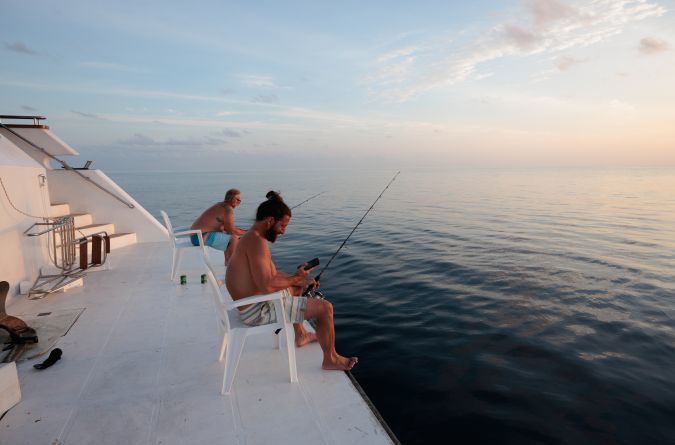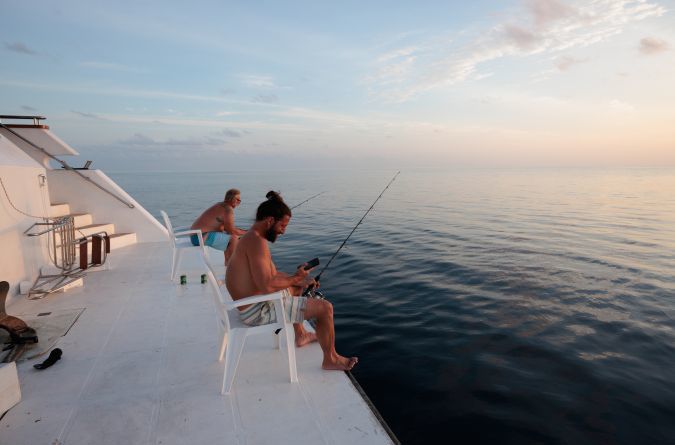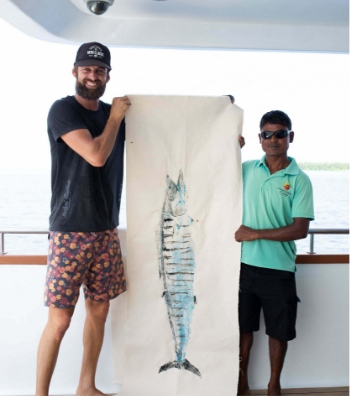Fishing and cruising
Maldivians lives off from what they acquire from the ocean. They respect the seas and nature itself. In turn, this has led to the sustainability of fishing and the wealth of the seas, which has been passed from generation to generation. To quote the words of a former president of Maldives here, “fishing is the life blood of our nation, it is inborn. From the soil on which we live, to the sea around us, it remains an integral part of our existence. Fishing, and our country and its people, (are) one and shall remain inseparable forever”. This emphasizes on how important fishing is to the people of the Maldives. Fishing is the second biggest industry in the Maldives, with a workforce of 22000.
Fishing Season
All year around
Fishing & Cruising Information
Tuna Fishing
Tuna fishing in the Maldives is carried out in traditional fishing boats called dhonis. They are wooden boats built using wood from the coconut palm. Earlier, these dhonis used sails. Now almost all of these vessels are motorised. Around 4 am in the morning, the fishermen head out in their dhonis to catch bait fish as tuna prefers live bait. Usually shallow areas within the atoll are ideal bait fishing grounds. When they catch enough bait, special bait wells in the dhoni keeps the bait alive. After this, they head out to the open ocean in search of schools of tuna. They do not use fish finders or GPS, but instead they follow the sea birds, as these birds will congregate on schools of tuna.
When the fishermen reach a school of tuna they start throwing the live bait into the sea. This drives the tuna into a feeding frenzy. At this point, the fishermen start casting their fishing poles. This type of fishing is known as pole and line fishing. The poles are usually made from about 10 to 15 feet long bamboo, which has a load bearing capacity of about 25 kilograms. A fishing line is tied to one end of the pole and a barbless hook with a feather is attached to the other end of the fishing line. From a school of tuna that bites well, every fisherman will catch a tuna every minute. Six to seven members doing this simultaneously would feel like tuna rain on the decks of the vessel. A typical dhoni will catch about 2 to 4 tonnes of tuna on a good fishing day. When the fishermen return home (after 5 to 6 hours) they sell the fish for local consumption or to collecting vessels around the country for different purposes, including canning and freezing
Reef Fishing
Traditionally, in the Maldives, very few types of fishing were carried out; they include pelagic fishing and reef fishing. The most important types of fish caught from the open ocean consist of different types of tuna, rainbow runners, dolphin fish, wahoo, sail fish and some varieties of shark. Reef fishing concentrates on mainly high value fishes such as groupers, jacks, varieties of snappers and green job fish.
Maldivians mostly carry out reef fishing by hand lines. This type of fishing utilizes smaller vessels called bokkuraas. These vessels will usually carry about 2 to 3 people and the trip will last about 4 to 5 hours. For this type of fishing, different types of bait, including fish waste, octopus, live bait and other types of fish flesh, are used. The type of bait used varies with different types of fish caught. For example, it is preferred to use live bait for jack, fish waste for snapper, and feathered hooks with no bait for green job fish.
Earlier, reef fishing was carried out for household use and not on a commercial scale. Due to the country’s exposure to the outside world and an ever-increasing demand from the international marketand the tourism industry of the Maldives, reef fishing is also being commercialised. There is a lot of potential for growth in this sector of fishing in the Maldives. Properregulations and an effective monitoring system from the government can safeguard the sustainability of reef fishing, for centuries to come. The rich fishing grounds of Maldives can be handed over to their rightful owners; the next generation.



